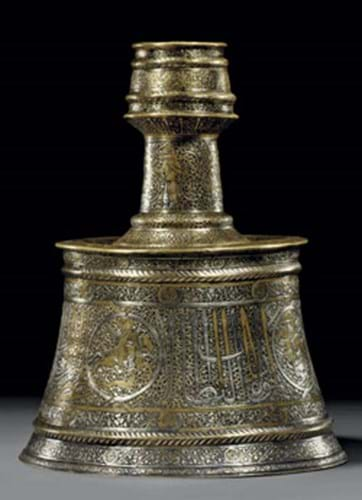
As expected, the bulk of that total was provided by the opening session on March 4, the first 100 lots devoted to Islamic works of art. Furthermore, as predicted, the sale's best seller was this impressive 14th century silver and gold inlaid brass candlestick, from the Fars region of Southern Iran.
Gillot's collection, formed in the late 19th century and undisturbed since his death in 1903, featured early European works of art but was particularly rich in early pieces from the Islamic world for which he was an early enthusiast.
Today Gillot's tastes chime with a number of wealthy Middle Eastern collectors who are prepared to pay handsomely to add such pieces to their collections, and this old European provenance exerted a particularly strong pull.
As is usual at such events, the bulk of the spending was done by four or five voracious telephone bidders and this 13 3/4in (35cm) high candlestick was their particular prize. Instead of progressing by the usual sedate increments, bidding took a series of dramatic jumps, leaping in a single bound from an opening of around 130,000 euros to 500,000 euros from one telephone bidder, only to see the Mansour Gallery then bid 1m euros from the floor.
More bidders joined in and eventually two phones entered a protracted bidding battle to the final hammer price of 2.65m euros (£2.1m). This is the highest sum paid at auction for one of these candlesticks or indeed any inlaid metal Islamic object.
Lot after lot in the Islamic section gave a similar estimate-crushing performance, with the buyer of the candlestick securing at least four other major prizes.
By Anne Crane




